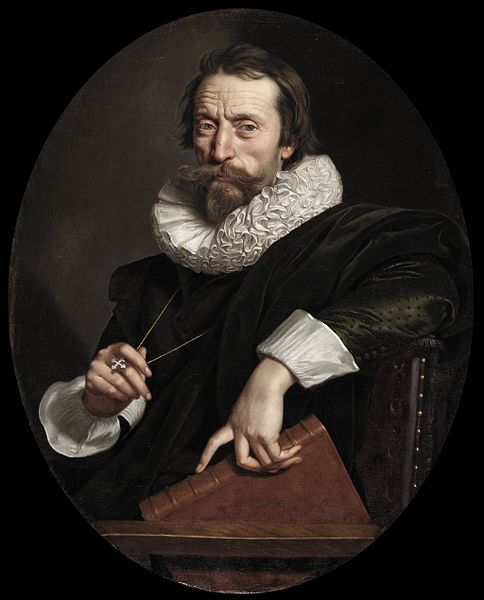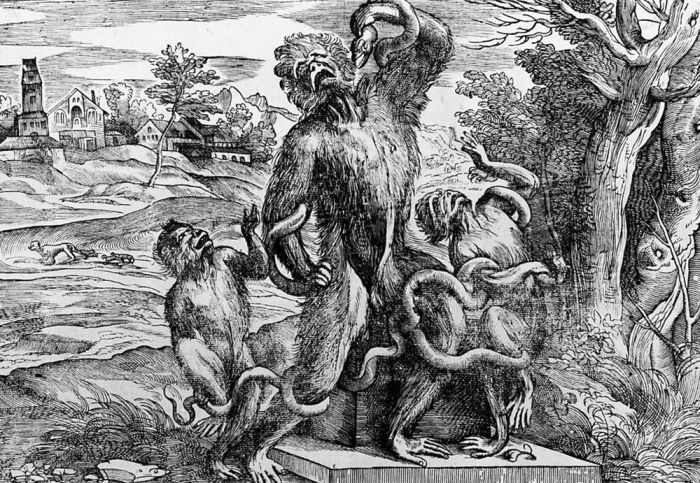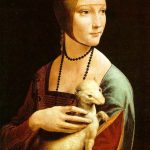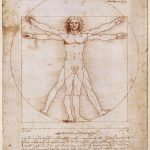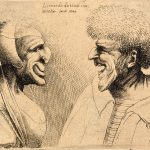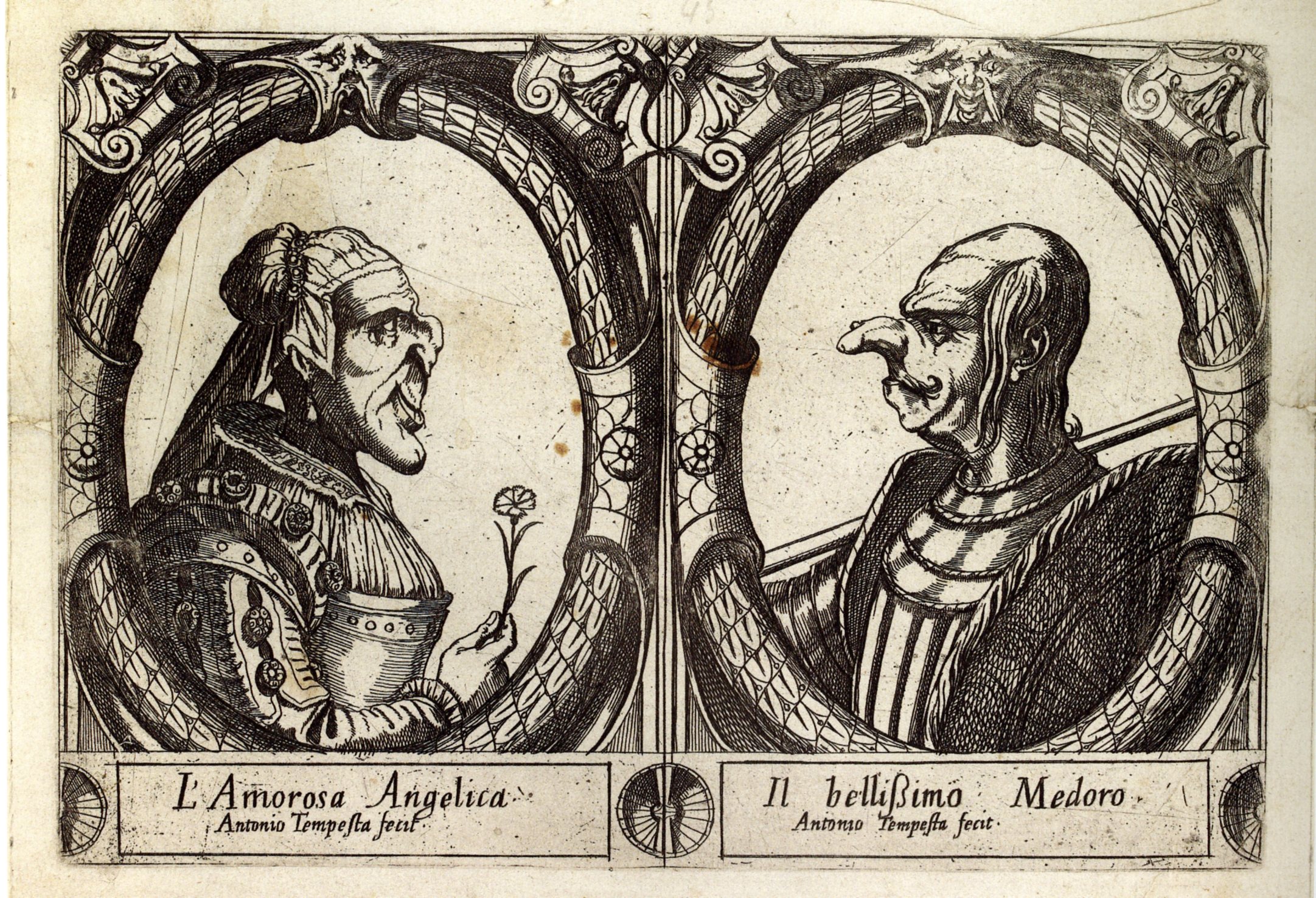In the seventh canto of Ludovico Ariosto’s Orlando furioso (1532) Ruggiero arrives at the island of the sorceress Alcina. The sorceress encounters him on the threshold of her wonderful palace. She appears as the image of beauty itself. «Her person», Ariosto writes, «is as shapely and as fine / As painters at their most inspired can show», and her face presents a «perfect symmetry». The long description accurately depicts every detail of Alcina’s face and body. (OF, VII, 11-16):
Di persona era tanto ben formata,
quanto me’ finger san pittori industri;
con bionda chioma lunga ed annodata:
oro non è che più risplenda e lustri.
Spargeasi per la guancia delicata
misto color di rose e di ligustri;
di terso avorio era la fronte lieta,
che lo spazio finia con giusta meta.
Sotto duo negri e sottilissimi archi
son duo negri occhi, anzi duo chiari soli,
pietosi a riguardare, a mover parchi;
intorno cui par ch’Amor scherzi e voli,
e ch’indi tutta la faretra scarchi
e che visibilmente i cori involi:
quindi il naso per mezzo il viso scende,
che non truova l’invidia ove l’emende.
Sotto quel sta, quasi fra due vallette,
la bocca sparsa di natio cinabro;
quivi due filze son di perle elette,
che chiude ed apre un bello e dolce labro:
quindi escon le cortesi parolette
da render molle ogni cor rozzo e scabro;
quivi si forma quel suave riso,
ch’apre a sua posta in terra il paradiso.
Bianca nieve è il bel collo, e ’l petto latte;
il collo è tondo, il petto colmo e largo:
due pome acerbe, e pur d’avorio fatte,
vengono e van come onda al primo margo,
quando piacevole aura il mar combatte.
Non potria l’altre parti veder Argo:
ben si può giudicar che corrisponde
a quel ch’appar di fuor quel che s’asconde
Mostran le braccia sua misura giusta;
e la candida man spesso si vede
lunghetta alquanto e di larghezza angusta,
dove né nodo appar, né vena eccede.
Si vede al fin de la persona augusta
il breve, asciutto e ritondetto piede.
Gli angelici sembianti nati in cielo
non si ponno celar sotto alcun velo.
Avea in ogni sua parte un laccio teso,
o parli o rida o canti o passo muova:
né maraviglia è se Ruggier n’è preso,
poi che tanto benigna se la truova.
Quel che di lei già avea dal mirto inteso,
com’è perfida e ria, poco gli giova;
ch’inganno o tradimento non gli è aviso
che possa star con sì soave riso.
Continue reading →
